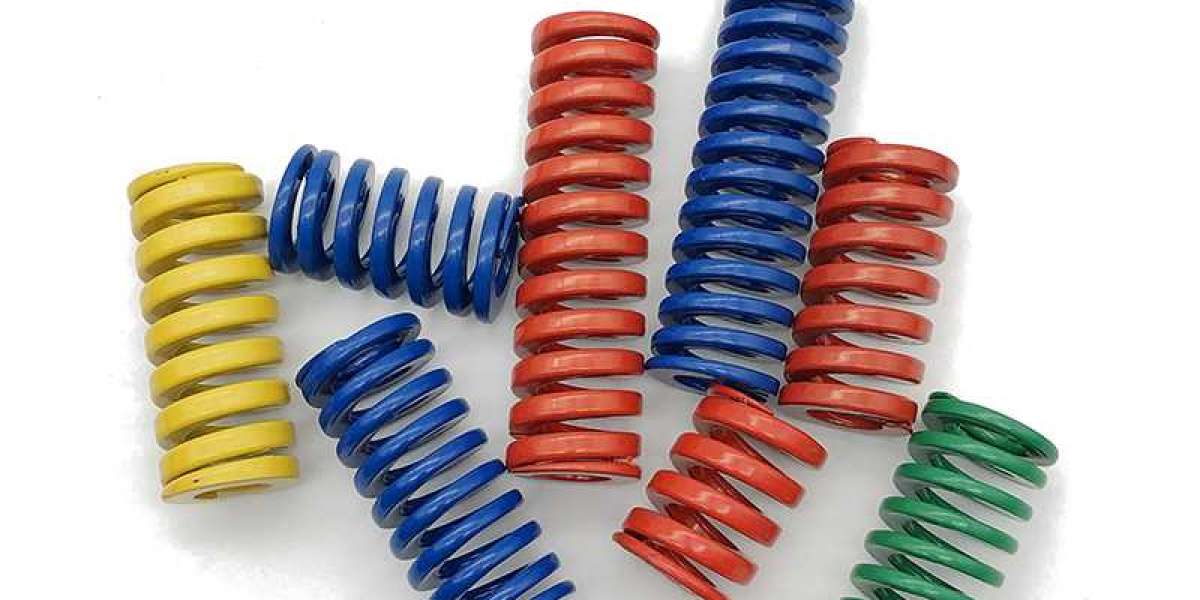Characteristics of Die Springs
1.High-Strength Material
Die springs are typically made from high-quality alloy steel or carbon steel. They undergo heat treatment and surface finishing, giving them excellent fatigue resistance and wear resistance.
2.High Load Capacity
Compared to standard springs, die springs are more compact in design and capable of handling much higher loads.
3.Color Coding
Die springs are often color-coded based on their load capacity, for easy identification:
•Yellow: Light load
•Blue: Medium load
•Red: Heavy load
•Green: Extra heavy load
This system helps users quickly select the appropriate spring.
4.Durability
Die springs are designed for long service life and maintain stable performance even in high-frequency, high-stress working environments.
Applications of Die Springs
Die springs are widely used in various fields:
1.Stamping Dies
In stamping processes, die springs provide support and cushioning for punches, ensuring precise product shaping.
2.Plastic Injection Molds
They assist in ejecting molded plastic products while reducing mold wear.
3.Industrial Equipment
Die springs play roles in shock absorption, load-bearing, and support in automation machinery, fixtures, and stamping equipment.
4.High-Load Environments
Suitable for devices that endure significant pressure, such as hydraulic presses, power presses, and large-scale machinery.
How to Select Die Springs
When selecting die springs, the following factors should be considered:
1.Load: Determine the maximum pressure the spring needs to withstand.
2.Stroke (Compression): The spring’s compression should not exceed its maximum stroke to avoid reduced service life.
3.Outer Diameter and Length: Ensure the spring fits the installation space of the equipment.
4.Material: Choose the appropriate material depending on the working environment, such as high-temperature or corrosive conditions.
Maintenance and Care of Die Springs
1.Regular Inspections
Frequently check for wear and tear to prevent failures caused by overuse.
2.Avoid Overloading
Do not exceed the spring’s rated load, as this can cause fatigue failure.
3.Lubrication and Cleaning
Periodically lubricate the spring’s surface and remove dust and debris to extend its service life.
The Future of Die Springs
With the growing demand for industrial automation and high-performance equipment, die springs are evolving toward higher strength, longer lifespans, and greater environmental friendliness. Advances in material science will further enhance the performance of die springs, enabling them to meet increasingly complex industrial needs.
Conclusion
Die springs are indispensable components in industrial equipment due to their exceptional load-bearing capacity and durability. Proper selection and maintenance can maximize their performance and extend their service life.
Let's talk today! Come to contact me!



